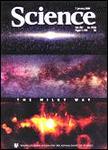版权所有:内蒙古大学图书馆 技术提供:维普资讯• 智图
内蒙古自治区呼和浩特市赛罕区大学西街235号 邮编: 010021

作者机构:Jodrell Bank Centre for Astrophysics School of Physics and Astronomy University of Manchester Manchester M13 9PL UK. Commonwealth Science and Industrial Research Organisation (CSIRO) Astronomy and Space Science Australia Telescope National Facility Post Office Box 76 Epping NSW 1710 Australia. Centre for Astrophysics and Supercomputing Swinburne University of Technology Mail H30 Post Office Box 218 Hawthorn VIC 3122 Australia. Australian Research Council Centre of Excellence for All-Sky Astrophysics (CAASTRO) Mail H30 Post Office Box 218 Hawthorn VIC 3122 Australia. West Virginia University Center for Astrophysics West Virginia University Morgantown WV 26506 USA. International Centre for Radio Astronomy Research Department of Imaging and Applied Physics Faculty of Science and Engineering Curtin University Post Office Box U1987 Perth WA 6845 Australia. Istituto Nazionale di Astrofisica Osservatorio Astronomico di Cagliari Loc. Poggio dei Pini Strada 54 09012 Capoterra (CA) Italy. Jet Propulsion Laboratory California Institute of Technology 4800 Oak Grove Drive Pasadena CA 91104 USA. Max-Planck-Institut für Radio Astronomie Auf dem Hugel 69 53121 Bonn Germany. Dipartimento di Fisica Universita di Cagliari Cittadella Universitaria 09042 Monserrato (CA) Italy.
出 版 物:《SCIENCE》 (科学)
年 卷 期:2013年第341卷第6143期
页 面:237-237页
核心收录:
基 金:Science and Technology Facilities Council European Commission, EC Seventh Framework Programme, FP7, (227947) Seventh Framework Programme, FP7 Science and Technology Facilities Council, STFC, (ST/J001562/1, ST/F002874/1, ST/G002487/1) Science and Technology Facilities Council, STFC
主 题:RADIO astronomy COSMOLOGICAL distances RED shift BARYONS RADIO waves -- Scattering PULSARS SUPERNOVAE
摘 要:Searches for transient astrophysical sources often reveal unexpected classes of objects that are useful physical laboratories. In a recent survey for pulsars and fast transients, we have uncovered four millisecond-duration radio transients all more than 40° from the Galactic plane. The bursts’ properties indicate that they are of celestial rather than terrestrial origin. Host galaxy and intergalactic medium models suggest that they have cosmological redshifts of 0.5 to 1 and distances of up to 3 gigaparsecs. No temporally coincident x- or gamma-ray signature was identified in association with the bursts. Characterization of the source population and identification of host galaxies offers an opportunity to determine the baryonic content of the universe.